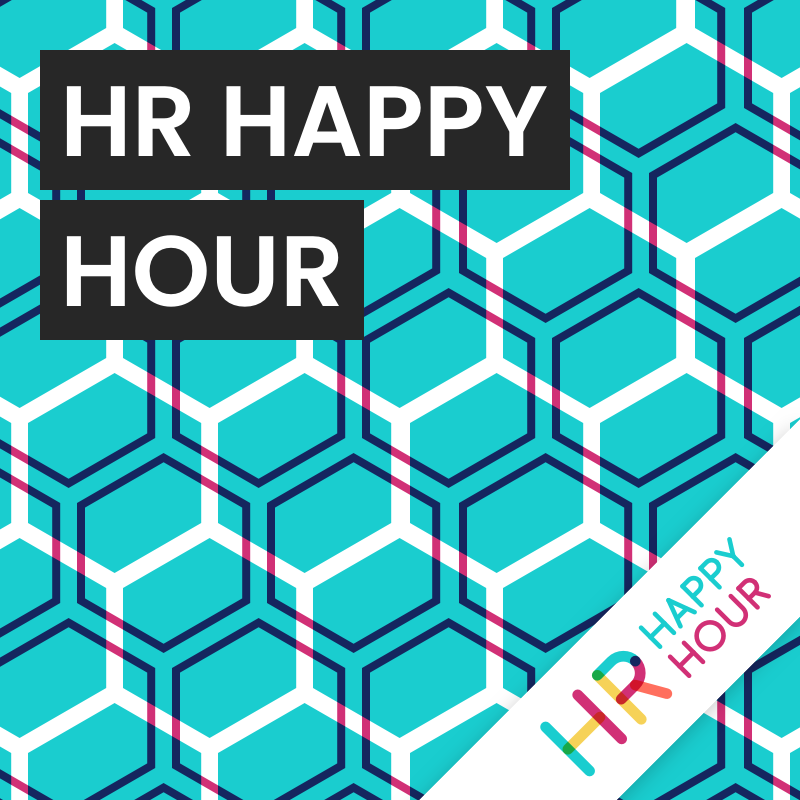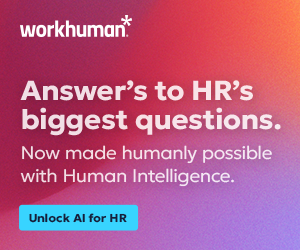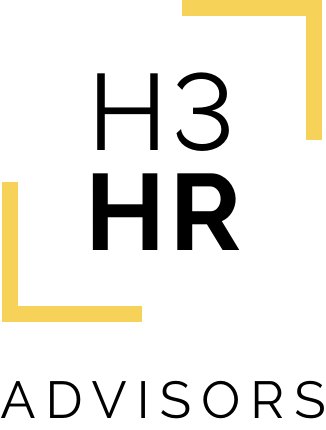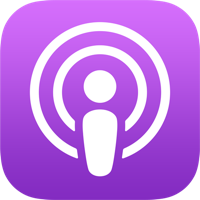LIVE from isolved Connect: Leading the Transformation of Work and Life
Hosted by

Karen Steed
Client Experience Director & Media Producer

Trish Steed
Co- Founder and Chief Strategy Officer, H3 HR Advisors
About this episode
Hosts: Trish Steed, Karen Steed
Guests: James Norwood, Chief Marketing & Strategy Officer and Pragya Malhotra, Chief Product Officer
This week, we met with James Norwood and Pragya Malhotra live from the isolved Connect Conference in Nashville, TN.
– The transformation of work and life in the industry
– Supporting your customers with the right technology
– Connecting with your employees and boosting engagement
– Challenges HR technology is still facing
Connect with Pragya Malhotra on Twitter @MalhotraPragya
Connect with James Norwood here
Thank you for joining the show today! Remember to subscribe wherever you get your podcasts!
Transcript follows:
Steve 0:24
Hi everyone this is Steve Boese. Recently, the HR Happy Hour and H3 HR Advisors team attended the isolved Connect Conference in Nashville, Tennessee. At the event, we sat down with several isolved leaders and isolved customers to talk about some of the most important topics, issues, and trends in the world of work, HCM, technology, and more. This episode is a part of that series recorded at the event and we’re excited to share them with you. Thanks to our friends at isolved. And we hope you enjoy the show.
Trish 0:54
Welcome to the HR Happy Hour. You are here with Trish and my special guest host, Karen Steed.
Karen Steed 1:00
Hi Trish, how are you?
Trish 1:01
I’m good. Thank you for joining me. We’re here at isolved Connect in Nashville, Tennessee.
Karen Steed 1:08
The energy is great. So nice being here, just with everyone walking around and seeing everything happening. It’s great.
Trish 1:16
I know. And I’m excited that we have the opportunity to record this show here. We’re going to be doing multiple episodes that people will hear in the next few weeks. But we really want to focus in on what’s going on in the industry. What are HR professionals, other business leaders looking for when it comes to their technology. So we’ll be touching on a lot of different topics. We’re going to do some deep dives with customers going forward, we’re going to talk to the people who are actually designing the product. So I think this will be a great, great way to kick off the event.
Karen Steed 1:44
I think so. I think we should probably start with the overall.
Trish 1:48
Yeah, so today on our episode, we’re gonna go completely big picture. We have James Norwood, the Chief Marketing and strategy officer and Pragya Malhotra, the Chief Product Officer, and we are going to have a good discussion around high level and what’s going on at isolved. And what’s really most important to them. So welcome to the show. James, why don’t we start with you, maybe introduce yourself to the audience. Tell a little bit about you and a little bit about isolved.
James Norwood 2:18
Thanks, Trish. Thanks, Karen. Thanks for having me on the show. And yeah, a little bit about me, I’ve been in enterprise software for I hate to say more than 35 years. Naturally, as you can tell from my accent, I’m a native Texan. And, you know, actually began my career in payroll, it was something I often forget, because it was so long ago, and, you know, gone to various guises. But to be back here with isolved for the last two years, you know, right in the heart center of human capital management is it’s like coming full circle in your career. So it’s an exciting place to be at an exciting time.
Trish 2:54
That’s great. And Pragya, you recently joined, I believe this is your second official day, right? Why don’t you tell everyone a little bit about yourself and what you’re going to be doing at isolved.
Pragya Malhotra 3:06
First of all, thank you for having me. Yes, this is my day two. So I am as much as you are learning here and just happy to be here. On it’s good to make connection with you know, people right on the base but I am not new to the industry. So I’ve been in HXM for almost six years now, and have been doing enterprise software for over 20 years. So it’s good to see how far we’ve come along in the industry as a whole and how we are leading in this transformation of work and life coming together for everyone. It’s just good to see our industry taking that by the front.
Trish 3:44
Well, you know, it’s interesting, you mentioned transformation, because I think that’s one of the things I really wanted to have you both touch on because not only has isolved gone through a really big transformation these last couple of years. I was at Connect last year and talked to a lot of your customers. And they are all that’s just a word that came up over and over. And I’m sure as we’re kicking this off, we’ll hear more of that in the next couple of days as well. But could you maybe James, touch a little bit on that both from your your clients perspective? Like what are you hearing as you’re kind of talking to them? Are they feeling like the technology is really supporting this business transformation? What do they really think?
James Norwood 4:24
Yeah, you know, I think what they think is, is it transcends technology, right? It’s been two traumatic years for human resources professionals all over the world. I mean, they’ve gone from being I like to call it the cobblers children, where they were massively under invested in to overnight being in the spotlight where they were expected to have the answers for literally everything through the digital transformation work was going at such a pace, and then they they’re expected to have the answers. So it’s just been, as I say, two very traumatic years. And it’s made it an exciting time to be in this industry and to be helping support this industry of folks. But gosh, they’ve had a hard time.
Karen Steed 5:11
So what are you really seeing as far as like, what’s the big impact other than the years that we’ve been through, obviously had been very tough. What do we see like just that are really impacting your customers?
James Norwood 5:25
Yeah, you know, we have a lot of customers can relate, we have 145,000 customers and supporting five out of almost five and a half million employees out there. So it’s a lot of companies. And it really is, our customers are the backbone of the US economy, their SMB sort of 50 to a couple of 1000 employees. It’s that rapid growth, where you’re maturing very fast. So what we’ve seen is all of these changes that have been ushered in over the last few years has created a whole bunch of challenges for them. And they’ve had to step back and say, Where are we in terms of human capital management, maturity, and also at digital maturity as well.
James Norwood 6:03
And our goal as a company has been to try to help guide them say, where are you now? And where have you got to be based on what you’re facing. And let’s see what processes and support we can offer to help you with that. And maybe there’s some technology that goes along with that, to help technology learn, stop and fix it, right. So we’ve been seeing, for the first time in many years, HR departments having budget to go spend to go solve some of these issues. But the demands have been so high as I’ve which fires to be put out by us. And again, our job as a provider is to say, Hey, we are here, we are a sought. And we we can support you on any number of these things. But let’s come and look at what may be the most critical thing and helping you with that person help you build and mature as you as you go through the change. So that’s kind of what we’ve been seeing over the last, I guess, six to nine months.
Trish 6:59
I think that’s an interesting point. Because when I was a practitioner, it wasn’t I think, at the time I was it was more about going after maybe low hanging fruit. But what I’m sort of translating what you said is it’s really about having a partner who’s going to come and speak with you about what’s going to be the most impactful approach versus just doing maybe the easiest approach. Could you maybe share a little bit with us about like, what is your experience in terms of working with clients, and having them get away from that? Let’s just take care of the easiest fits first. And it’s maybe a more impactful approach that’s more beneficial.
Pragya Malhotra 7:34
I would add on what do you send over, you know, overnight, when COVID started with all of the CHRO kind of shifted, HR was meant as kind of the soft function or the administrative function, let’s get the payroll running, let’s get the time running, be more of a Alright, employees are more how do we keep them engaged? And then there was a period of great resignation. And James talked about it this morning, how do we get them to great re engagement, and HR is now leading the forefront? And the CEO is stepping onto the CHR. Oh, and asking, What are we going to do about it how employees, we got to make sure we have enough employees, when you have the employees, we can onboard them quickly. We have the best policies to make sure that they are engaged, they’re committed, and they want to stay. So HR has taken on this broader role of making the organization go forward, when employees and getting access to good talent has become such a critical issue.
Trish 8:32
It’s interesting that you say that because to me, one of the biggest drivers of engagement is connection. And I don’t hear as much about that, right? We hear lots of companies, organizations addressing employee engagement, and all these other ways, right? But they are not really focusing on technology that helps them be connected more. And it’s interesting that you even your events is called an act. Right? So maybe change talk a little bit about what is the thought process within isolved on actually connecting employees to help with those things. When you join a new job, staying engaged, that sort of thing. What’s your philosophy on that?
James Norwood 9:13
Our main goal is to try to be as easy to use as possible and to kind of get out of the way, people that need to get on boarded fast and need to get productive and compliant fast and all that. So we’ve actually, in the last year, we completely reimagined and reinvented our onboarding applications, something that we had for a very long time, but we looked harder than saying Are they up to today’s rapid onboarding, as Pragya says, you know, lots of people onboarding and off boarding at higher rates than ever before. And so we we went and spoke to our customers said, What is it for purpose and we ended up with something completely new, which they absolutely love, which is great, but it is helping them sort of cycle through and do things by getting out of the way and making it easy for people to get things done quickly. So that was that was it The example of that, and that helps create a connection from the very beginning of an employee coming out, should we know about an onboarding experience, you’re not going to stick around very long. So that’s helping.
James Norwood 10:12
And then the other thing is just on the talent management side, you know, sort of how you look to retain and keep people engaged. It’s trying to help them understand that there are some tools and there are some processes out there that you don’t have to be a big company to adopt. There are things that if you have remote workers and hybrid workers, that can very quickly be put into place, it’s going to connect them with one another, if they’re not in the office, or in the factory or, you know, side by side every day. And so again, it’s been an education process and trying to help them understand what’s available, what can it do for you, and that you don’t have to be this big enterprise to really go after that. Because I think there is a bit of a perception that of talent management, engagement and investing in big companies. It’s not, it’s not, it’s just as important for a company of 100 employees, if not more, to make sure they retain those folks, because if they lose one person, they can’t meet their orders. Right. So it’s, it’s it’s a big part.
Karen Steed 11:14
And so it’s good to know that you know, the technologies that you’re looking at are making things more simple with the onboarding, and, and retaining talent and all that. But are you seeing anything, really, that the technology isn’t addressing yet? Some issues that have popped up and we just aren’t able to tackle?
Pragya Malhotra 11:33
Yeah, so what I see is that, you know, now that there’s not a big influx of gig economy, right, we’ve been talking about this for a few years now. But in that there is one, two people who are kind of sharing jobs, or sometimes there’s one person who’s wearing multiple hats. From a technology perspective, how do we address that? How does the software enable either one person doing multiple jobs or multiple people doing one job, so there is a need to figure that out in the software? And then the other thing I would say, James talked about 100%. Sometimes we think only enterprises need talent management or talent or coaching and development software, know the need is pervasive even in in 100, employee organization, so is the need for mentoring. So is the need for growing your employees. How do we build those connections, those matches within the organization, so employees are getting connected. So those are, in my mind some of the things even looking to, to figure out what that means for our sizing segment.
James Norwood 12:31
And I’d add to that, I mean, again, if you look at an average customers, midsize businesses, they’re going to face additional maturity and most of our position, it’s not that we don’t have the technology for them, it’s just there, they they don’t think to adopt it, or they think it’s not right than say, for example, like a chatbot, or conversational virtual assistant, we released one, you know, earlier this year. And, you know, normally it’s only the major software vendors have had that up at the height, the enterprise software vendors, we’re obviously a major corporate vendor. But you know, trying to help our customers say, Well, this is not something to be afraid of, this is something your employees at survey show would absolutely be happy to use, and would deflect so many common HR Service Management requests to self service, which would free you up to then focus on some of these other things, because the biggest challenge they face is, I got too much to do. And so it’s in many cases, it’s not there isn’t the technology to do it. It’s, they’re not aware of it, or they’re afraid of it, or, you know, no one’s explained to them how it’s going to come in and help them. And that’s a big part of what we do at events like this is say, here’s some, here’s some best practices, here’s some approaches you can use, it might not be right for you. But you know, it gives you time to think about that and say, Okay, maybe somewhere at this conference, we’re going to find one nugget that we’re going to take that is going to make a difference.
Trish 13:54
Well, I think one of the things that stands out most from my time with Connect last year with you all was that the customers I talked to that was a common thread that was like woven in every conversation is they felt supported. And you don’t always hear that from a vendor client relationship, regardless of what kind of vendor it is, right? Any of us that have relationships that you know, buying relationships. So I do think that is something that you need with you, I think that connect the connection that you have with your customers that you’re supporting is very special to them, they feel like they can look at the phone, make that call, get that support. So I’m looking forward to hearing even more about that this year. And I think that that’s it starts from the top down and starts with people like you who are sort of envisioning this future of work, and how you need to support your potential customers, your current customers and also be innovative. It’s it’s a big sort of load that you’re carrying, but, but you’re both doing it really well.
Trish 14:51
So thank you for coming on the show. James and Pragya, where can people connect with you? Again, we’ll start with Pragya first. Where’s the best place if people want to learn more? Get in Touch?
Pragya Malhotra 15:01
LinkedIn, Twitter, my email address, we’ll be happy to share. So either way, please reach out ask questions. We’d love to just connect one on one and discuss.
Trish 15:10
Good, wonderful. We’ll share those in the show notes as well. And James, what about you?
James Norwood 15:14
I’m the Chief Marketing Officer. So if I say anything other than the website, you’d have to be concerned. So www.isolvedhcm.com.
Trish 15:23
Very good. Well, thank you so much, and we look forward to talking to more people at isolved Connect.
Karen Steed 15:29
It was great meeting with you both.
James Norwood 15:30
Thanks for having us!
Transcribed by https://otter.ai
Talk to us
If you want to know more about any aspect of HR Happy Hour Media Network, or if you want to find out more about a show topic, then get in touch.









